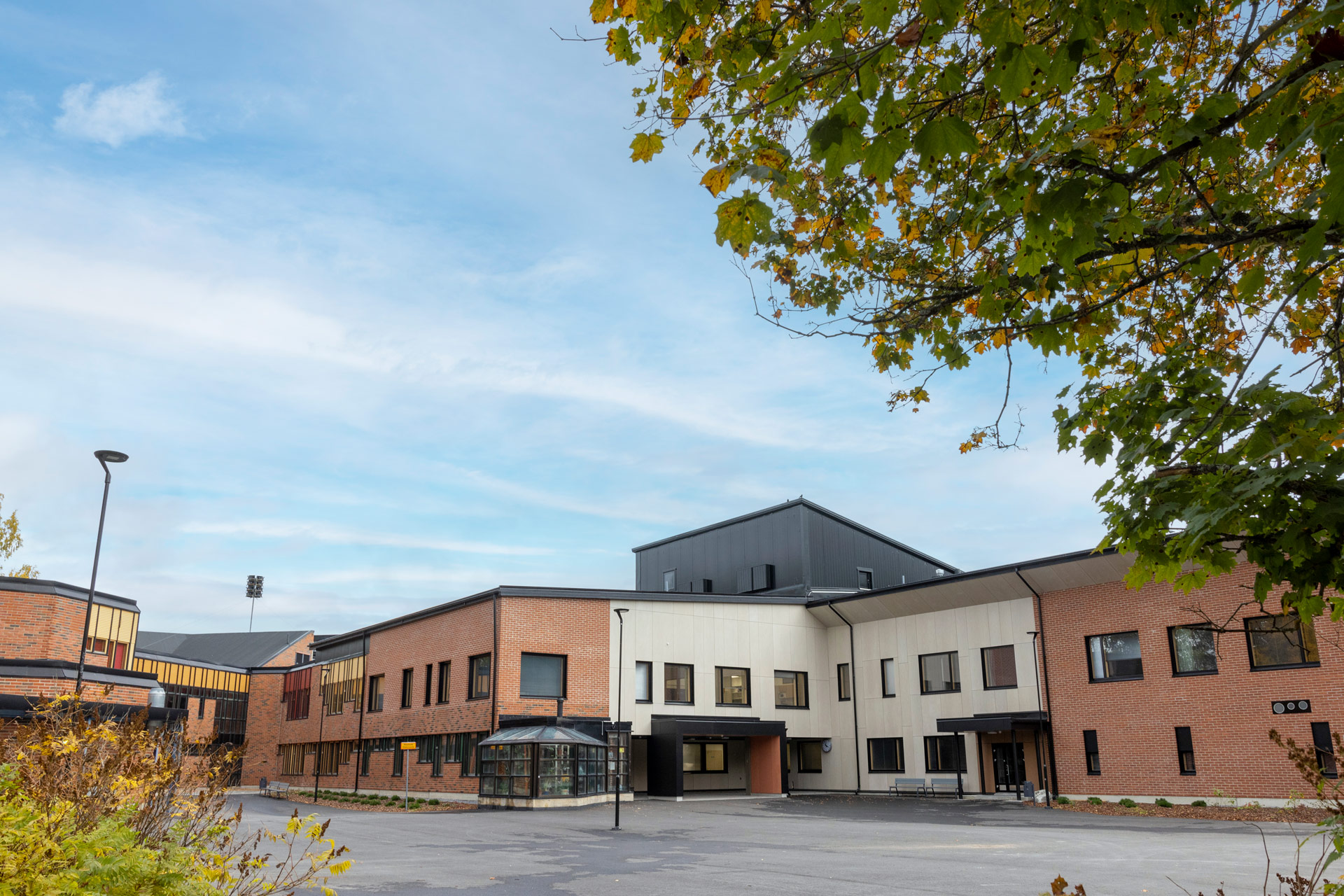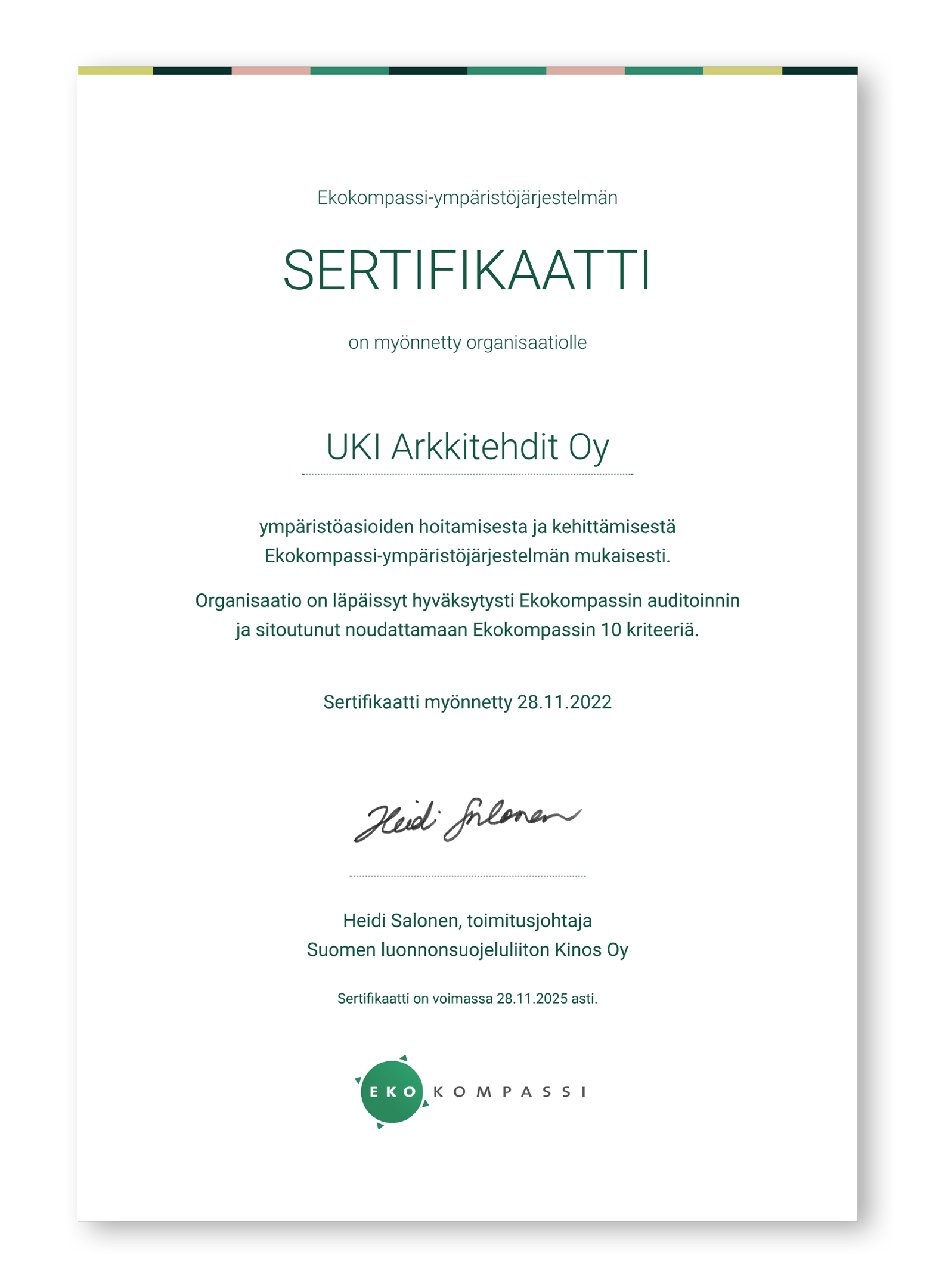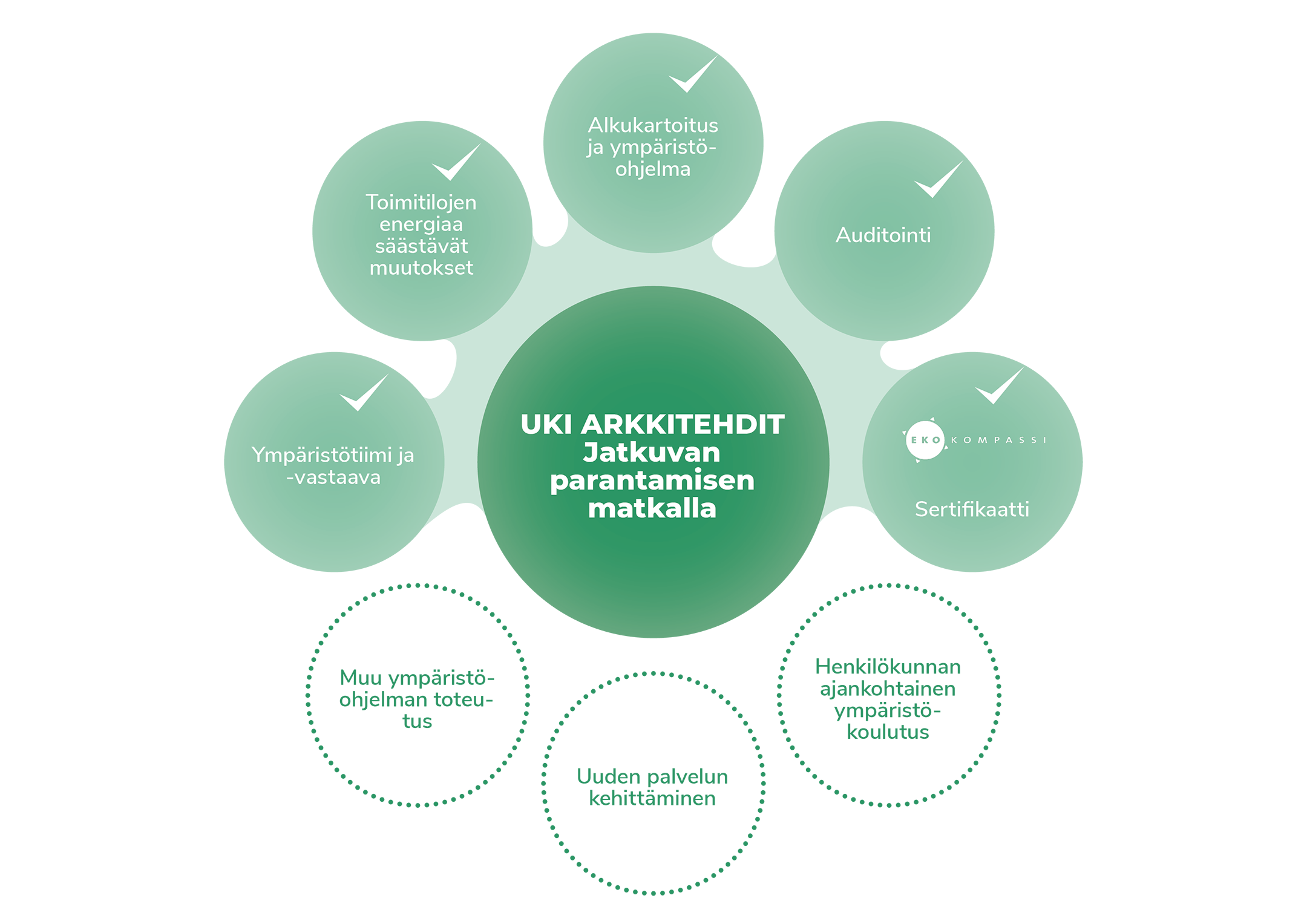UKI Arkkitehdit received the EcoCompass environmental certificate
Sustainable development is continuously improving operation. The world cannot be saved at a stroke, but by proceeding patiently towards the goal one thing at a time. UKI considers environmental issues both internally and in design work.

Ympäristökehitystyömme UKI Arkkitehdeillä on vasta alussa, mutta meillä on jo valmistunut esimerkiksi Vaasaan RTS-ympäristöluokituksen mukaisesti toteutettu Variskan yhtenäiskoulu. SR-urakkakilpailuun sisältyi tilaajan vaatima RTS-ympäristöluokitus, jonka kriteerit pureutuvat mm. ympäristövastuullisuuteen, kestävän kehityksen periaatteisiin, rakennuksen ja sen käyttäjien terveyteen sekä energiatalouteen.
Luokitusarvosana todentuu viisiportaisella tähtiluokituksella ja osa kriteereistä on pakollisia. Kyseisessä hankkeessa saavutettiin kolme tähteä, ”hyvä ympäristölaadun taso”.
Kiinteistöjen hyvinvointi ja turvallisuus on lähtökohtaisesti arvoja, joita suunnitteluvaiheessa otetaan aina huomioon ja toteutetaan. Esimerkiksi kulkureitit, tilojen sijoittuminen rakennuksessa ja tontilla sekä yhteisten tilojen hyödyntäminen kuuluvat tähän. Suunnittelijat suorittavat osaltaan rakennuttajan ja suunnittelijan työturvallisuusvelvoitteiden edellyttämät suunnittelutehtävät, asetuksen VNA 205/2009 7 mukaisesti.
Sustainable development has been selected as one of the strategic development spearheads of UKI Arkkitehdit, and a sustainable development team has been nominated to advance the work. A year ago in February, the development of environmental issues gained momentum when the process to acquire the EcoCompass certificate started.
”If you want to be a forerunner in environmental issues and responsible operation, the right time to act is at once”, explain Tamara Louis and Hanna Säikkälä from UKI Arkkitehdit.
Building an environmental system was the first concrete goal the sustainable development team was given, and it was also achieved. The EcoCompass environmental certificate was granted after an approved audit when an objective specialist found that the necessary criteria were fulfilled.

The EcoCompass of the Finnish Association for Nature Conservation was chosen from a group of many environmental systems as a human-scale alternative that could be tailored to UKI’s needs. The environmental system contains goals and actions for reducing environmental impacts.
From concrete actions to the goal
The clear EcoCompass process guided UKI staff in adopting environmental issues and continuous improvement – in internal operation as well as in design work. One of the criteria in EcoCompass was nominating an environmental coordinator for the company, and sustainable development team leader Tamara Louis was elected to that post. In addition to the core team of Tamara Louis and Hanna Säikkälä, a whole bunch of interested UKI professionals joined in establishing the environmental system.
”We got our work on a concrete footing right from the start – goals, actions, schedules – that took the project forward. After the certification, many employees have told that they want to be part of the work. This clearly motivates the staff, and many have good ideas to improve things further.”
The environmental impacts of the organisation were identified in an initial survey. At the same time, we found that a lot of company internal issues were already in order. Necessary changes and actions rounded off the remaining issues.
”We made a big effort in sorting office waste, and we use fossil-free electricity in all our offices. An employment benefit bicycle is available to our staff, and a mileage challenge encourages the staff to exercise and cycle. IT equipment is recycled as efficiently as possible, and we purchase environmentally certified office and coffee supplies”, Säikkälä explains.
”The matter has been received favourably, and there’s also a fun side to it. For example, waste sorting has revealed some internal waste inspectors – who put what to the trash. Changes are received with curiosity”, Säikkälä and Louis point out.
Growth from development and education
Kestävä kehitys rakentamisessa on kovassa kasvussa. Tamara Louisin mukaan tarjouspyynnöissä ja kilpailutuksissa yhä useammin vaaditaan ympäristöjärjestelmää ja sertifiointia. Uudistuva la
Sustainable development in construction is rapidly growing. According to Tamara Louis, an environmental system and certification is increasingly required in calls for bids and tenders. Renewing legislation becomes tighter, and environmental attachments will be obligatory in permit applications in the next few years. The goal is that the competence of UKI designers in calculating the lifecycle and carbon footprint of buildings is on a high level already before the requirement of a climate assessment comes into effect.
Development starts with staff training in the primary operation of UKI Arkkitehdit – design work. Next year, staff members from all three offices can attend the trainings that are arranged together with an external consultant.
”Everyone has an inkling of the issues already, although not necessarily a deep one. The whole staff attends the basic training already in January and deep training will be given to project managers and designers working in the customer interface, because they can influence the customer’s choices. Advance interest seems to be great.”
An internal workshop was arranged in June to encourage people to brainstorm how change is possible specifically at UKI. Supporting design checklists are created to help acknowledge correct issues in different project phases. The result is hopefully more durable and environmentally friendly buildings.
Although the certificate has been acquired and the environmental system has been created, work continues as continuous improvement. Progress towards moderate goals takes place persistently one thing at a time. The change can be monitored with the environmental system in the coming years.

”We are excited to see when the trainings materialise in actions and emerge also in the design work, and we can continue to develop even more responsible business.”
We strive to systematically develop our competence in the overall sustainability of design solutions and to reduce the consumption of natural resources caused by our work.